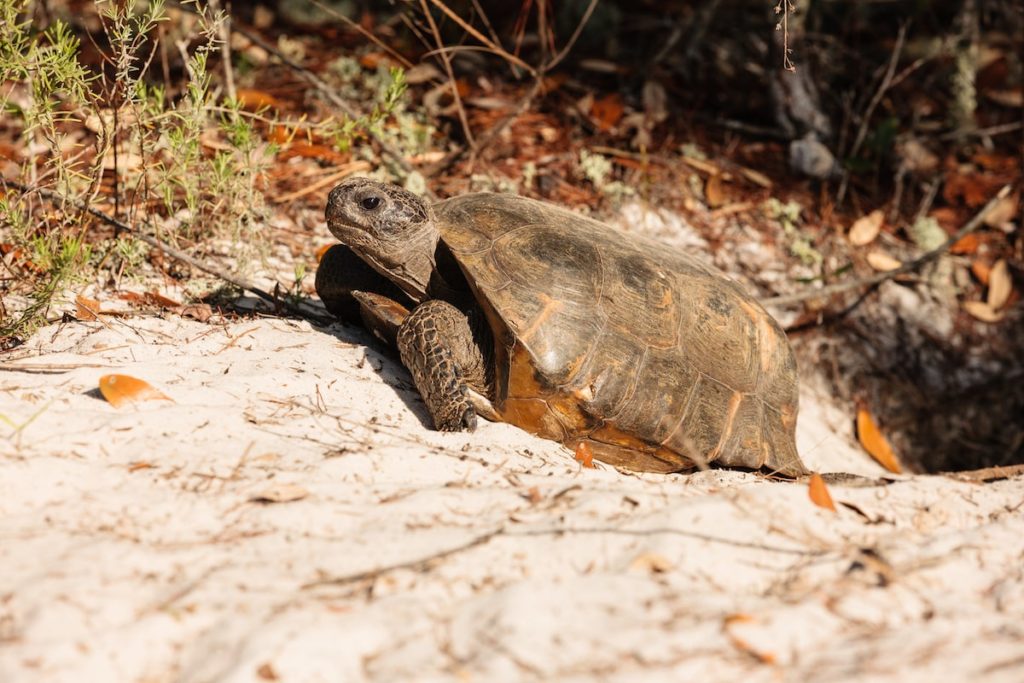There’s nothing quite like springtime in the South. Birdwatchers, wildlife enthusiasts, photographers—you all know how special the country is when the days get a little brighter and the weather a little warmer. With its 1,800 acres to explore, The Ford Field & River Club is a springtime paradise, and is the perfect starting point for so many excursions into prime, untouched lowcountry land.
On April 16, members of The Ford and guests are invited to join our naturalist Brittany Dodge at the Deepwater Marina to set out for a springtime paddle of Okefenokee Wildlife Refuge—just two hours from home. Participants will meet at the Deepwater Marina, drive to the refuge then set out for some scenic adventures by kayak and canoe.
Established as a refuge and breeding ground in 1937, the Okefenokee Wildlife Refuge comprises 353,981 acres of National Wilderness Area. It’s also considered a Wetland of International Importance as one of the world’s largest intact freshwater ecosystems. The Suwannee and St Marys Rivers both come to a head within the refuge. Visitors can explore the vast wilderness by hiking, canoeing, or kayaking, or on a guided boat tour.
Because of its protected status, the refuge supports a thriving ecosystem of extraordinary wildlife—from more than 600 species of plants to rare swamp animals, birds and more. Spring is the perfect time to visit, with water lilies in bloom and wildflowers coming to life on the canals of the swamp. Below, get a glimpse of what you might encounter on this day trip. Just remember: it’s infinitely better in person.
5 Wildlife Species You Might Encounter at Okefenokee Wildlife Refuge:
1. American Alligator
With life spans of up to 50 years in the wild, the American alligator is one of the few native species without a natural predator (except for humans and the occasional adversarial alligator). Female a
lligators typically reach lengths of 8.2 feet, while males average around 11.2 feet. They’re found in freshwater—including rivers, swamps, and marshes—from North Carolina to Texas.

2. American Black Bear
Once at risk of endangerment, the black bear has made a successful comeback—thanks to wildlife management and conservation efforts. Spring sightings of black bears are now fairly common within the South, especially if venturing into dense wooded or swamp regions. These solitary animals range in weight from 200 to 600 pounds, making them the smallest bear species in North America.

3. Red-cockaded Woodpecker
Taking up residence among the Longleaf Pine, these small woodpeckers are likely to be heard before they’re spotted. Keep your ears tuned to the sounds of nature and look out for a black-and-white striped back and white cheek. Though it’s unlikely to be seen without binoculars or a camera, the bird has one standout feature: a tiny red streak (“cockade”) at the top of its cheeks.

4. Gopher Tortoise
Protected under the Endangered Species Act (ESA), gopher tortoises are much smaller than you might imagine. Reaching weights of eight to fifteen pounds, these long-living reptiles (up to 100 years) are primarily herbivores. They provide invaluable services to the local ecosystem: their burrows offer shelter for smaller species, and their droppings spread seeds from many plants.

5. Sandhill Crane
Along the waters of the Okefenokee Wildlife Refuge, you’ll spot many wading birds. The most distinctive is arguably the sandhill crane—a tall, gray bird with a red “crown” at the top of its head. Keep your eyes peeled among tall grasses and shrubs, as you may spot a pair of these beauties nesting together.









